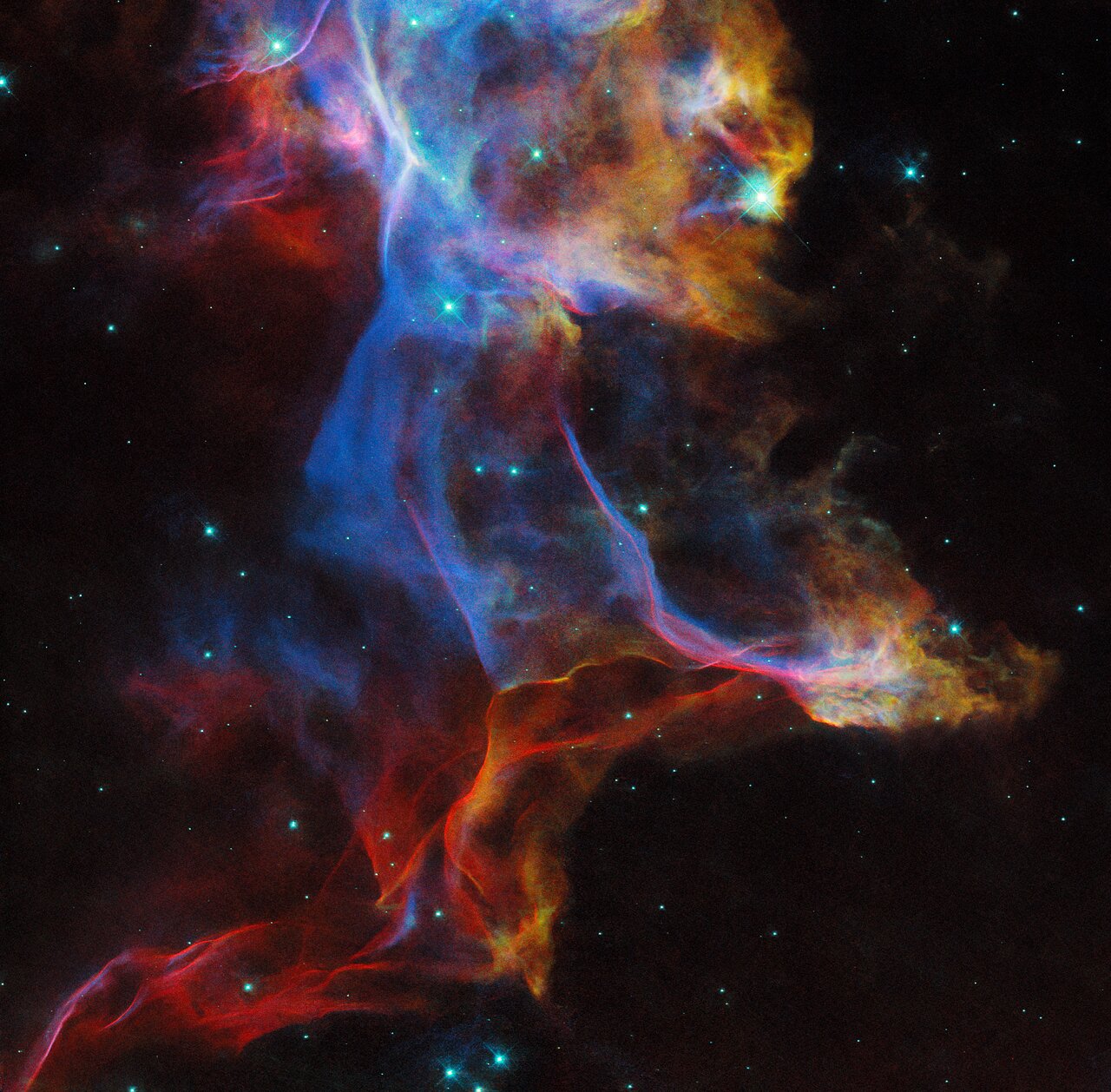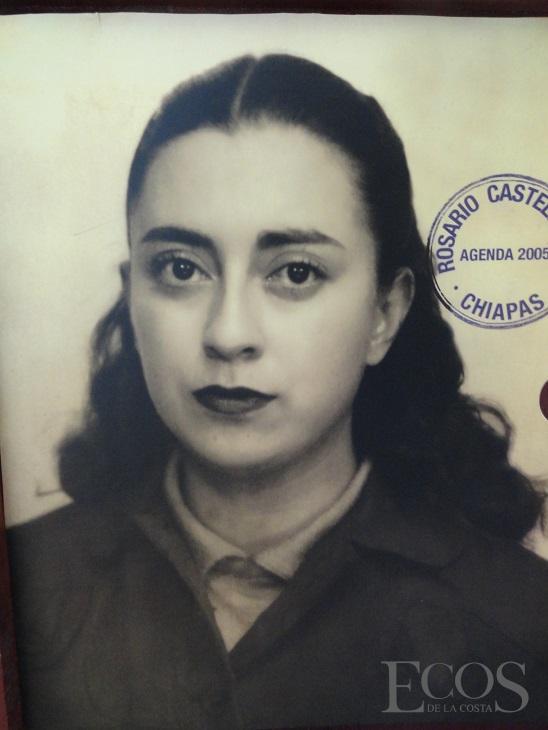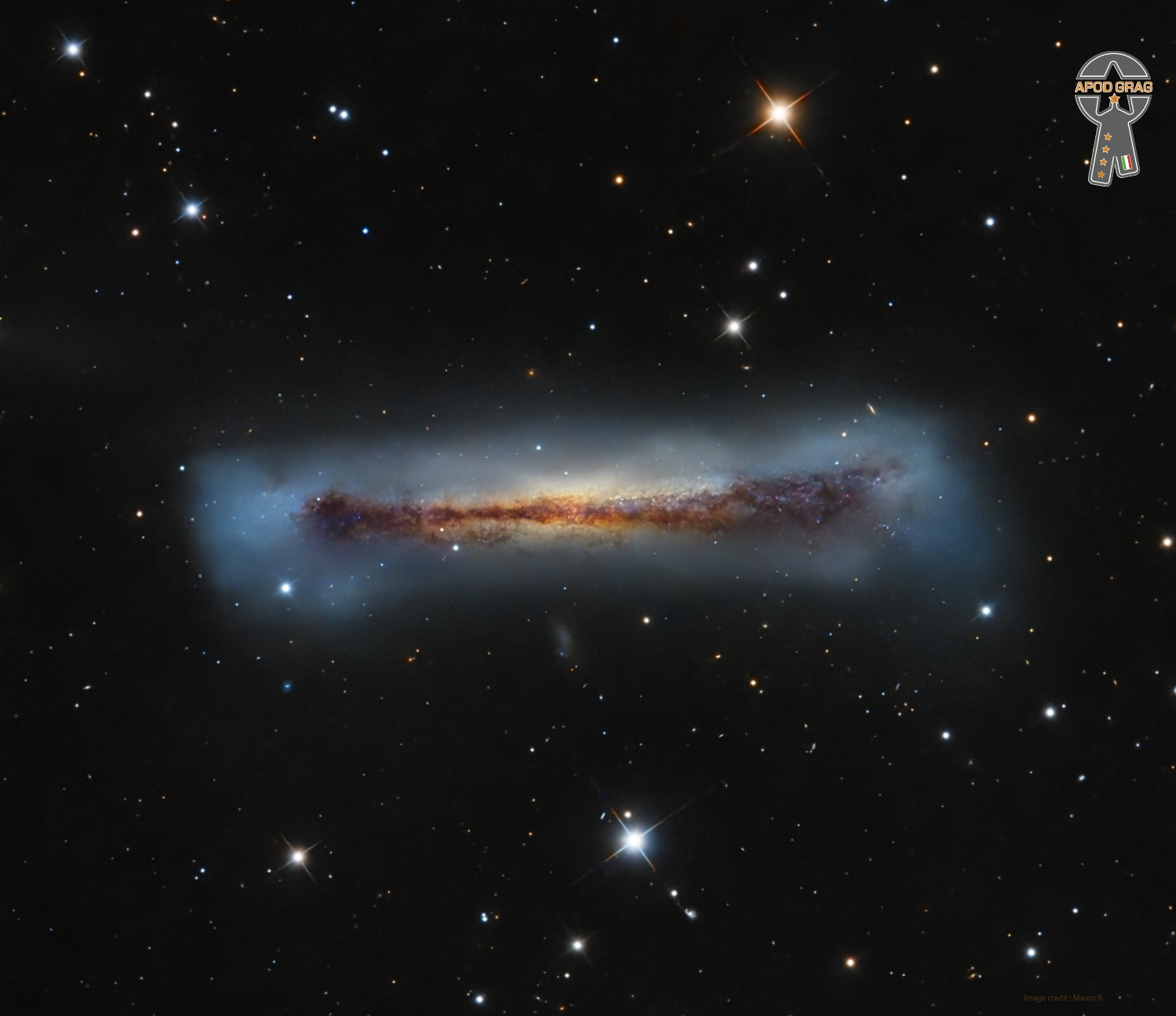Blog
In this NASA/ESA Hubble Space Telescope Picture of the Week, Hubble has once again lifted the veil on a famous — and frequently photographed — supernova remnant: the Veil Nebula. This nebula is the remnant of a star roughly 20 times as massive as the Sun that exploded about 10 000 years ago. Situated about 2400 light-years away in the constellation Cygnus, this photogenic nebula made an appearance as the Picture of the Week previously in 2021.
This view combines images taken in three different filters by Hubble’s Wide Field Camera 3 instrument, highlighting emission from hydrogen, sulphur and oxygen atoms. This image shows just a small fraction of the Veil Nebula; if you could see the entire nebula without the aid of a telescope, it would be as wide as six full Moons placed side by side. Look in the sidebar of this page to see this image superimposed on its location in the sky, and try zooming out to compare the size of the full nebula!
Although this image captures the Veil Nebula at just a single point in time, it will help researchers understand how the supernova remnant has evolved over decades. Combining this snapshot with Hubble observations from 1994 will reveal the motion of individual knots and filaments of gas over that span of time, enhancing our understanding of this stunning nebula.
[Image Description: A colourful, glowing nebula that reaches beyond the top and bottom of the image. It is made of translucent clouds of gas: wispy and thin with hard edges in some places, and puffy and opaque in others. Blue, red and yellow colours mix together, showing light emitted by different types of atoms in the hot gas. Bright and pointlike stars are scattered across the nebula. The background is black.]

Nicholas Christian Hopkins (24 February 1944 – 6 September 1994) was an English pianist and organist. He performed on many popular and enduring British and American rock music recordings from the 1960s to the 1990s, including on songs recorded by the Beatles, the Rolling Stones, the Who, the Kinks, the Steve Miller Band, Jefferson Airplane, Rod Stewart, George Harrison, John Lennon, Paul McCartney, Ringo Starr, The Hollies, Cat Stevens, Carly Simon, Harry Nilsson, Joe Walsh, Peter Frampton, Jerry Garcia, Jeff Beck, Joe Cocker, Art Garfunkel, Badfinger, Quicksilver Messenger Service and Donovan. He is widely considered to be one of the greatest studio pianists in the history of popular rock music. Hopkins died on 6 September 1994, at the age of 50, in Nashville, Tennessee, from complications resulting from intestinal surgery related to his lifelong battle with Crohn’s disease.
more...
Michel Jean Legrand (24 February 1932 – 26 January 2019) was a French musical composer, arranger, conductor, jazz pianist, and singer. Legrand was a prolific composer, having written over 200 film and television scores, in addition to many songs. His scores for two of the films of French New Wavedirector Jacques Demy, The Umbrellas of Cherbourg (1964) and The Young Girls of Rochefort (1967), earned Legrand his first Academy Award nominations. Legrand won his first Oscar for the song “The Windmills of Your Mind” from The Thomas Crown Affair (1968),and additional Oscars for Summer of ’42 (1971) and Barbra Streisand‘s Yentl (1983).
more...David “Fathead” Newman (February 24, 1933 – January 20, 2009 Corsicana, TX) was an American jazz and rhythm-and-blues saxophonist, who made numerous recordings as a session musician and leader, but is best known for his work as a sideman on seminal 1950s and early 1960s recordings by Ray Charles.
The AllMusic Guide to Jazz wrote that “there have not been many saxophonists and flutists more naturally soulful than David ‘Fathead’ Newman.”Newman was a leading proponent of the “Texas Tenor” saxophone style, a big-toned, bluesyapproach popularized by jazz tenor players from that state.
more...



Hall Franklin Overton (February 23, 1920 – November 24, 1972) was an American composer, jazz pianist and music teacher.
He was born in Bangor, Michigan, the first of the three sons of Stanford and Ruth (Barnes) Overton. He grew up in Grand Rapids, Michigan. After taking piano lessons as a youngster, Overton realized he’d have to travel beyond his small Midwestern town to find the kind of music instruction he wanted. His high school music teacher recognized Overton’s gift and recommended he attend The Chicago Musical College after graduation. Overton studied theory and composition there from 1940 to 1942.
more...Dark dust lanes cutting across the middle of this gorgeous island universe strongly hint that NGC 3628 is a spiral galaxy seen sideways. About 35 million light-years away in the northern springtime constellation Leo, NGC 3628 also bears the distinction of being the only member of the well known Leo triplet of galaxies not in Charles Messier’s famous catalog. Otherwise similar in size to our Milky Way galaxy, the disk of NGC 3628 is clearly seen to fan out near the galaxy’s edge. A faint arm of material also extends up and to the left in this deep view of the region. The distorted shape and tidal tail suggest that NGC 3628 is interacting gravitationally with the other spiral galaxies in the Leo triplet, M66 and M65.

Wayne Escoffery (born 23 February 1975) is an American jazz tenor saxophonist.
Since 2000, he has been working in New York City with Carl Allen, Eric Reed, and the Mingus Big Band. Other musicians performed with include Ralph Peterson Jr., Ben Riley, Ron Carter, Rufus Reid, Bill Charlap, Bruce Barth, Jimmy Cobb, and Eddie Henderson. He has worked with vocalists including Mary Stallings, Cynthia Scott, Nancie Banks, LaVerne Butler, and Carolyn Leonhart. In addition to performing with his own Quartet featuring David Kikoski, Ugonna Okegwo, and Ralph Peterson, Escoffery currently performs and tours with Ben Riley’s Monk Legacy Septet, the Mingus Band, Ron Carter’s big band, Monty Alexander, Amina Figarova, and others. He has been a member of the Tom Harrell Quintet since 2006. He has also co-produced four of Harrell’s latest recordings.
more...
Deborah Lynn Friedman (February 23, 1951 – January 9, 2011 Utica, NY) was an American singer-songwriter of religious Jewish music. She was an early pioneer of gender-sensitive language: using the feminine forms of the Divine or altering masculine-only text references in the Jewish Liturgy to include feminine language.
She is best known for her setting of “Mi Shebeirach” the prayer for Healing. Her songs are used in Reform, Conservative, and Orthodox Jewish congregations.
more...Esteban “Steve” Jordan (February 23, 1939 – August 13, 2010 Elsa, TX) was a jazz, rock, blues, conjunto and Tejano musician from the United States. He was also known as “El Parche”, “The Jimi Hendrix of the accordion“, and “the accordion wizard”. An accomplished musician, he played 35 different instruments.
more...
John Dawson Winter III (February 23, 1944 – July 16, 2014 Beaumont, TX) was an American singer, guitarist, songwriter, and record producer. Winter was known for his high-energy blues rock albums, live performances, and slide guitar playing from the late 1960s into the early 2000s. He also produced three Grammy Award-winning albums for blues singer and guitarist Muddy Waters. After his time with Waters, Winter recorded several Grammy-nominated blues albums. In 1988, he was inducted into the Blues FoundationHall of Fame and in 2003, he was ranked 63rd in Rolling Stone magazine’s list of the “100 Greatest Guitarists of All Time“.
more...George Frideric (or Frederick) Handel baptised Georg Fried[e]rich Händel,; 23 February 1685 – 14 April 1759) was a German-British Baroque composer well-known for his operas, oratorios, anthems, concerti grossi, and organ concerti.
Born in Halle, Germany, Handel spent his early life in Hamburg and Italy before settling in London in 1712, where he spent the bulk of his career and became a naturalised British subject in 1727. He was strongly influenced both by the middle-German polyphonic choral tradition and by composers of the Italian Baroque. In turn, Handel’s music forms one of the peaks of the “high baroque” style, bringing Italian opera to its highest development, creating the genres of English oratorio and organ concerto, and introducing a new style into English church music. He is consistently recognized as one of the greatest composers of his age.
Handel started three commercial opera companies to supply the English nobility with Italian opera. In 1737, he had a physical breakdown, changed direction creatively, addressed the middle class and made a transition to English choral works. After his success with Messiah (1742), he never composed an Italian opera again. His orchestral Water Music and Music for the Royal Fireworks remain steadfastly popular. One of his four coronation anthems, Zadok the Priest, has been performed at every British coronation since 1727. He died a respected and rich man in 1759, aged 74, and was given a state funeral at Westminster Abbey.
Interest in Handel’s music has grown since the mid-20th century. The musicologist Winton Dean wrote that “Handel was not only a great composer; he was a dramatic genius of the first order.” His music was admired by Classical-era composers, especially Mozart, Haydn and Beethoven.
more...More Posts
- Harmonic Slim Day
- World Music with Kankou Condé ft. Abdoulaye Keita
- Daily Roots with Time Unlimited
- Shabbat for the Soul
- The Cosmos with NGC 3324
- Billy Bragg Day
- Larry Willis Day
- Cousin Joe Day
- Flamenco Fridays with CAMARÓN
- Daily Roots with the Eclips Band
- The Cosmos with Abell 21
- Kermit Ruffins Day
- Lenny White Day
- Bobby Timmons Day
- Professor Longhair Day
- Edith Pilaf Day
- World Fusion with Tom Teasley
- Daily Roots with the Immortals
- The Cosmos with M81/82
- Keith Richards Day


